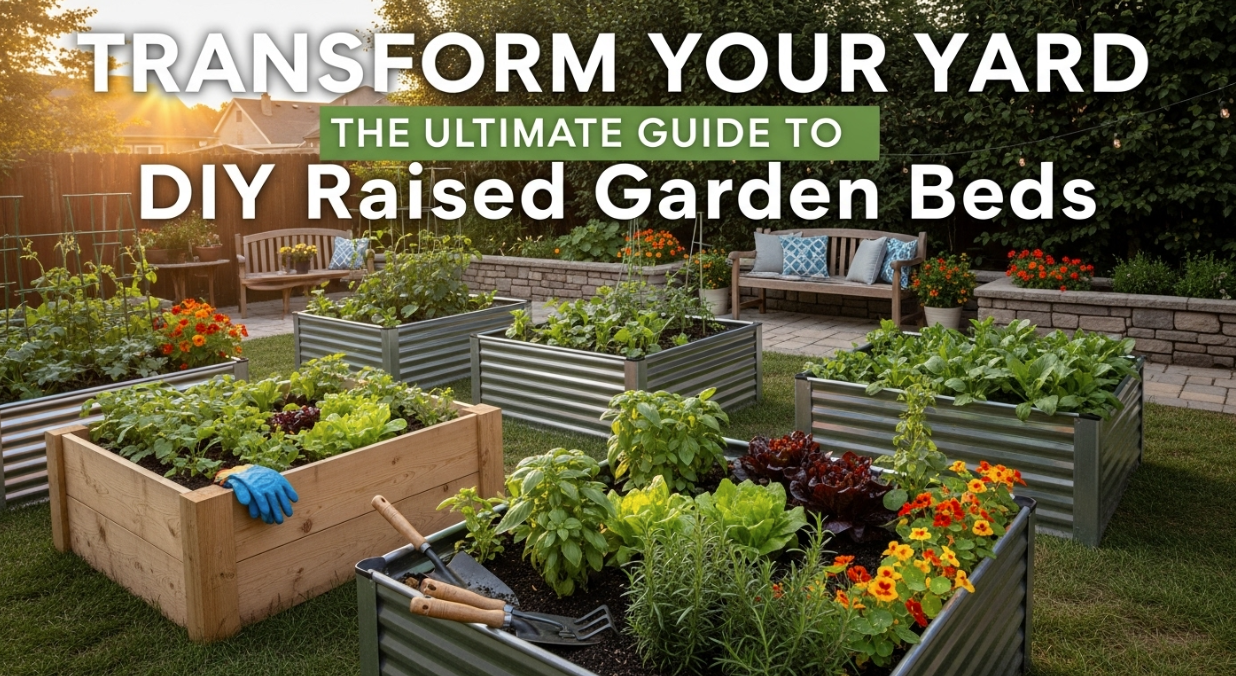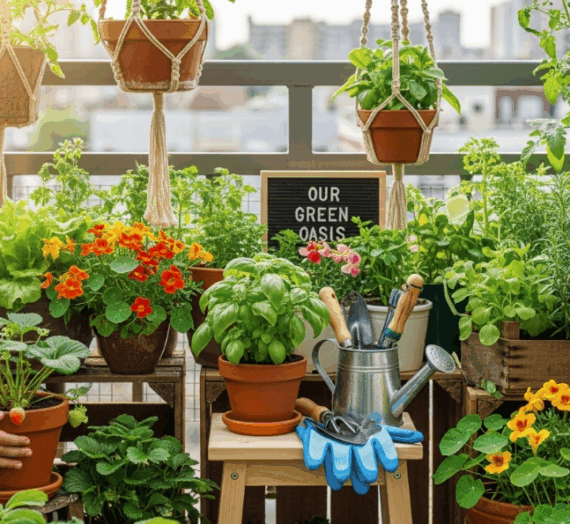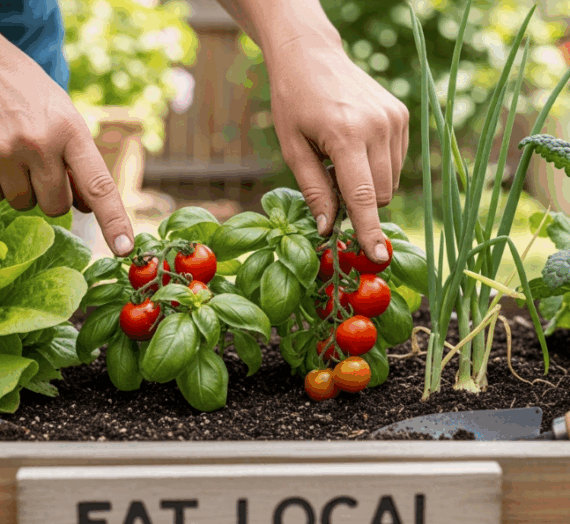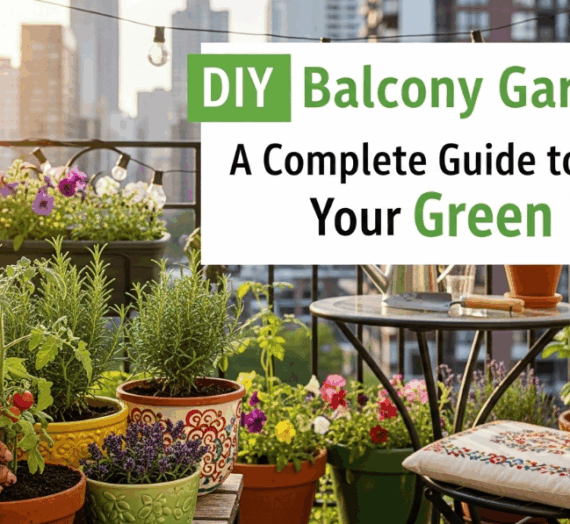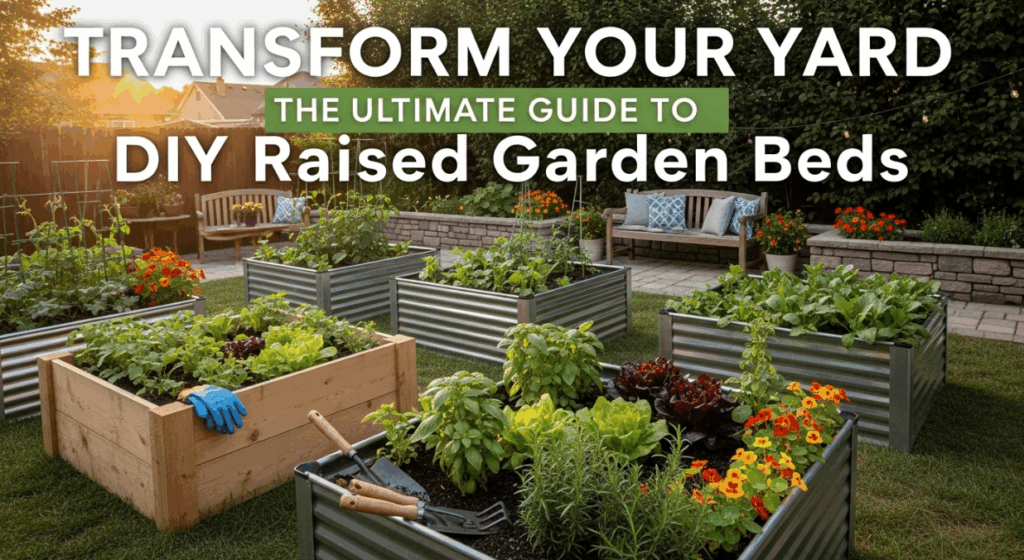
Introduction: Elevate Your Home Gardening Experience
Are you dreaming of a thriving backyard oasis filled with fresh vegetables, herbs, and vibrant flowers? While traditional in-ground gardens have their charm, **DIY raised garden beds** offer a superior solution for many home gardeners. These elevated structures provide numerous benefits, from better soil control and improved drainage to easier access and reduced pest problems. If you’re looking to elevate your home gardening game, building your own raised beds is a rewarding project that can dramatically increase your yield and enjoyment. This comprehensive guide will walk you through everything you need to know, from planning and design to construction and planting, ensuring your raised garden beds are a resounding success. Let’s dig in and transform your outdoor space into a productive paradise!
Raised garden beds are essentially contained planting areas elevated above the natural ground level. They can be constructed from various materials like wood, stone, metal, or even repurposed items. The beauty of a raised bed lies in its ability to give you complete control over the growing environment. No more battling compacted soil or dealing with poor drainage; with a raised bed, you create the ideal conditions for your plants to flourish. This not only makes gardening more efficient but also more enjoyable, allowing you to spend less time on chores and more time admiring your bountiful harvest.
For practical, research-backed guidance on raised beds and their benefits (drainage, warmer soils, reduced compaction, accessibility), see resources from land-grant extensions and practical reviews such as Penn State Extension and N.C. Cooperative Extension. (Penn State Extension: How to construct a raised bed) (N.C. Cooperative Extension: Building Raised Beds).
Why Choose Raised Garden Beds? Unlocking Their Many Benefits
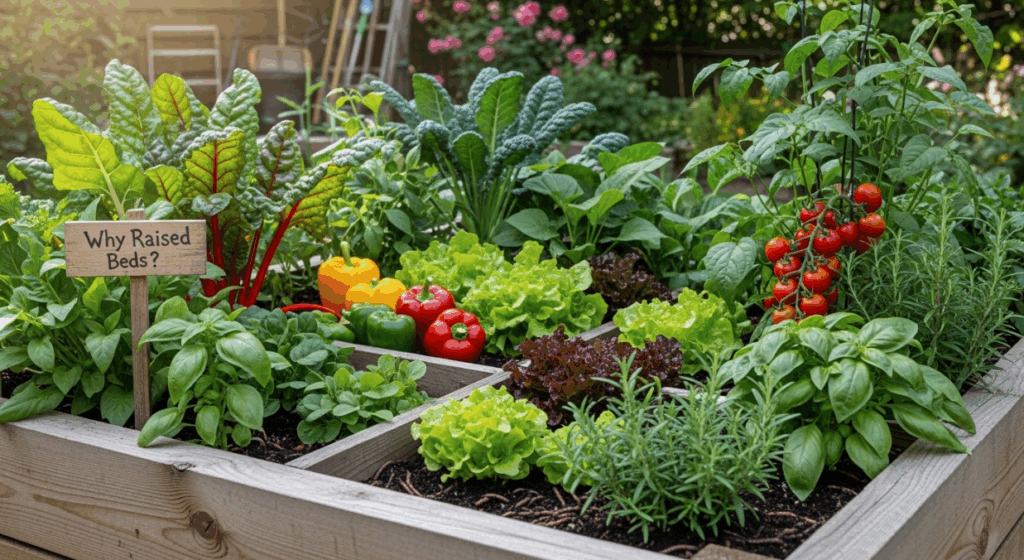
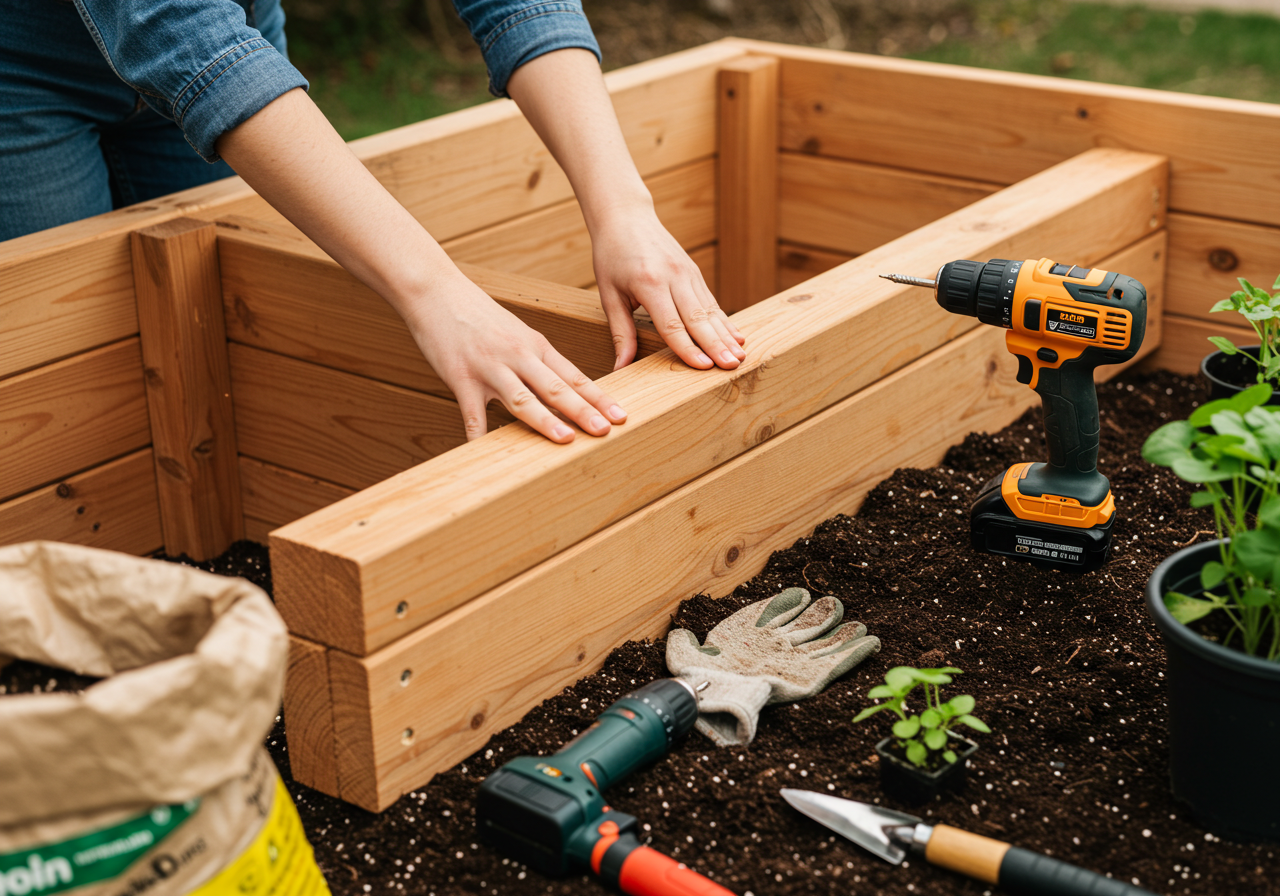
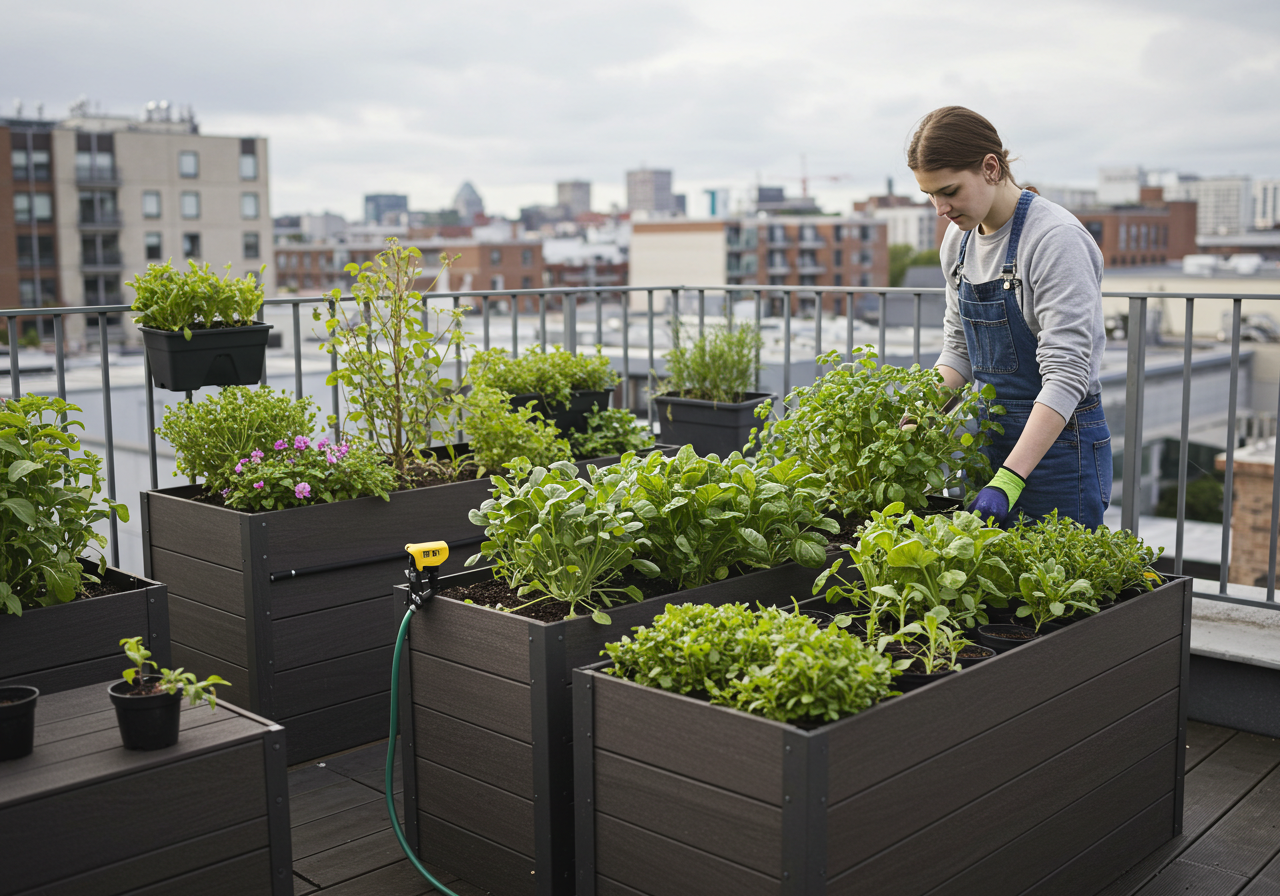

The popularity of raised garden beds isn’t just a trend; it’s a testament to their undeniable advantages for both novice and experienced gardeners. Understanding these benefits can help you appreciate why investing your time and effort into building them is a worthwhile endeavor.
Quick Summary: Benefits at a Glance
| Benefit | Why it matters |
|---|---|
| Superior soil control | You can build a custom mix for drainage and nutrients. |
| Improved drainage & faster warming | Prevents waterlogging and allows earlier planting. |
| Ergonomics | Less bending—easier for older gardeners and those with mobility issues. |
| Pest & weed control | Containment and weed-free fill reduce maintenance. |
Superior Soil Control for Optimal Growth
One of the most significant advantages of raised beds is the ability to create your own custom soil mix. Unlike native garden soil, which can often be heavy clay, sandy, or nutrient-depleted, you can fill your raised beds with a high-quality blend of compost, topsoil, and amendments. This provides an ideal growing medium that’s rich in nutrients, well-draining, and aerated – perfect conditions for healthy root development. This tailored soil environment leads to more vigorous plant growth and higher yields, giving you a distinct advantage over traditional gardening methods. Furthermore, you can easily replenish nutrients each season without disturbing the entire garden.
Improved Drainage and Extended Growing Season
Raised beds naturally offer superior drainage compared to flat ground. The elevated structure prevents waterlogging, which is crucial for preventing root rot and other moisture-related plant diseases. This improved drainage also means the soil warms up faster in the spring, allowing you to start planting earlier and extend your growing season. Similarly, in regions with heavy rainfall, the elevated beds prevent your plants from sitting in soggy conditions, ensuring their health and productivity. The quick-draining nature is also beneficial for sensitive crops that require well-drained soil to thrive.
Easier Access and Reduced Strain
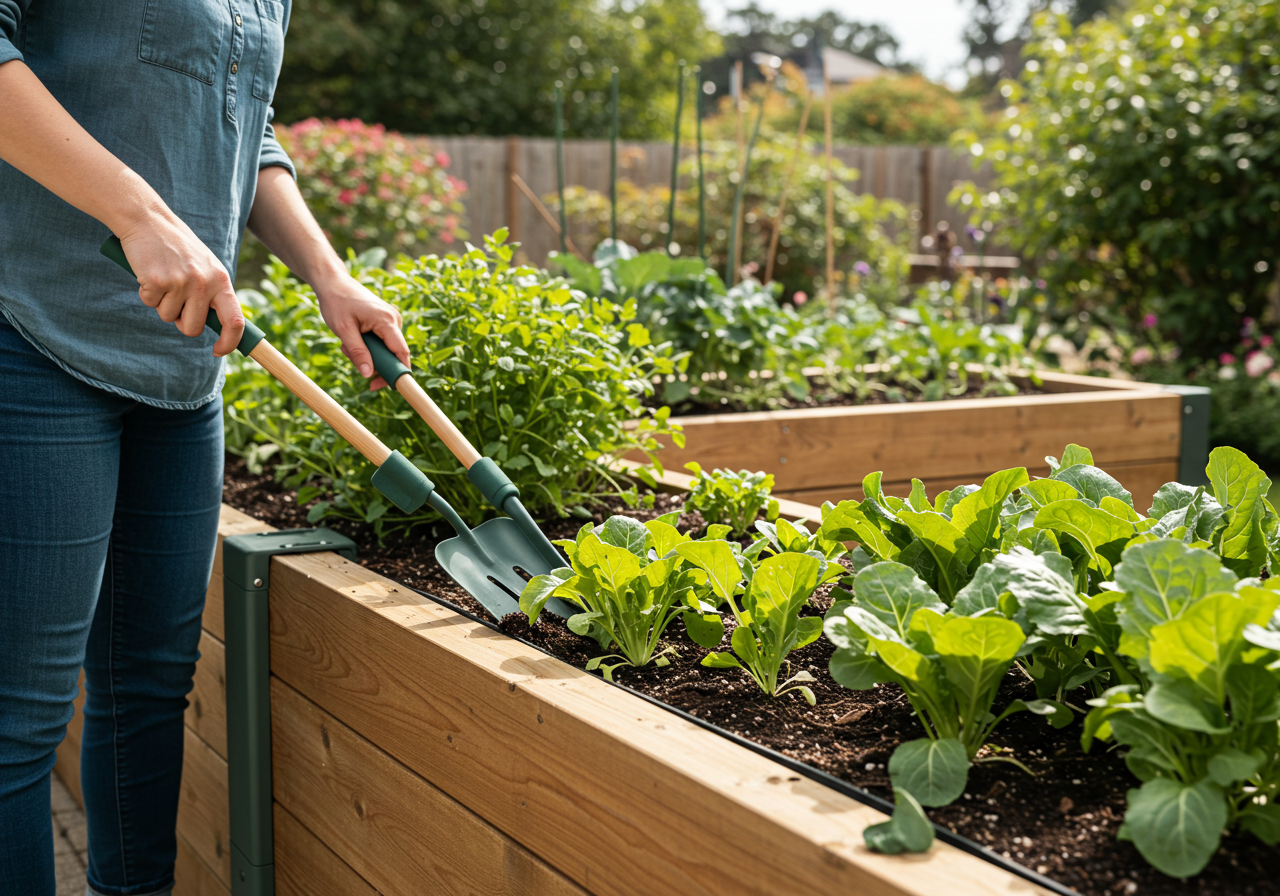
Bending over to tend to an in-ground garden can be hard on your back and knees. Raised garden beds bring the garden up to a more comfortable working height, making planting, weeding, and harvesting significantly easier. This ergonomic benefit is particularly valuable for older gardeners, individuals with mobility issues, or anyone who wants to enjoy gardening without discomfort. You’ll find yourself spending more enjoyable hours in the garden when it’s not a pain to work in. Accessibility isn’t just about comfort; it’s about making gardening a sustainable and long-term hobby.
Pest and Weed Management Made Simple
While not entirely foolproof, raised beds can significantly help in managing pests and weeds. The contained nature of the beds makes it harder for certain ground-dwelling pests to access your plants. Additionally, by using a weed barrier at the bottom and filling with weed-free soil, you can drastically reduce the amount of weeding required. Any weeds that do appear are typically easier to spot and remove from the raised elevation. This translates to less time spent on tedious maintenance and more time enjoying your harvest. Integrated pest management also becomes simpler when you have defined boundaries for your garden area.
Planning Your DIY Raised Garden Bed: The Blueprint for Success

Before you start cutting wood or laying bricks, careful planning is essential. A well-thought-out plan will save you time, money, and potential headaches down the line. Consider these key factors when designing your DIY raised garden beds.
Location, Location, Location: Sunlight and Water Access
The success of your garden hinges on its location. Most vegetables and flowering plants require at least 6-8 hours of direct sunlight per day. Observe your yard throughout the day to identify the sunniest spots. Also, consider proximity to a water source. Dragging hoses across your yard can be a hassle, so positioning your beds near a spigot will make watering much easier. Good air circulation is also important to prevent fungal diseases, so avoid placing beds in stagnant corners.
Choosing the Right Materials: Durability and Aesthetics
The material you choose will impact the longevity, cost, and appearance of your raised beds. **Wood** is a popular choice, with redwood, cedar, and cypress being naturally rot-resistant options. Avoid treated lumber as it can leach chemicals into your soil. **Corrugated metal** offers a modern look and excellent durability. **Stone or brick** provides a robust, long-lasting, and aesthetically pleasing option but can be more labor-intensive to construct. **Recycled plastic lumber** is another eco-friendly, durable, and low-maintenance choice. Consider your budget, desired lifespan, and the overall aesthetic of your garden when making your decision.
Sizing Your Beds: Dimensions for Optimal Accessibility
The ideal width for a raised garden bed is typically no more than 4 feet (1.2 meters). This allows you to easily reach the center of the bed from either side without stepping on the soil, which helps prevent compaction. The length can be as long as you desire, but consider breaking up very long beds with pathways for easier access. As for height, 10-12 inches (25-30 cm) is generally sufficient for most vegetables, providing ample root space. For root crops like carrots or potatoes, or if you have particularly poor native soil, a depth of 18-24 inches (45-60 cm) might be beneficial.
Building Your Raised Garden Bed: Step-by-Step Construction
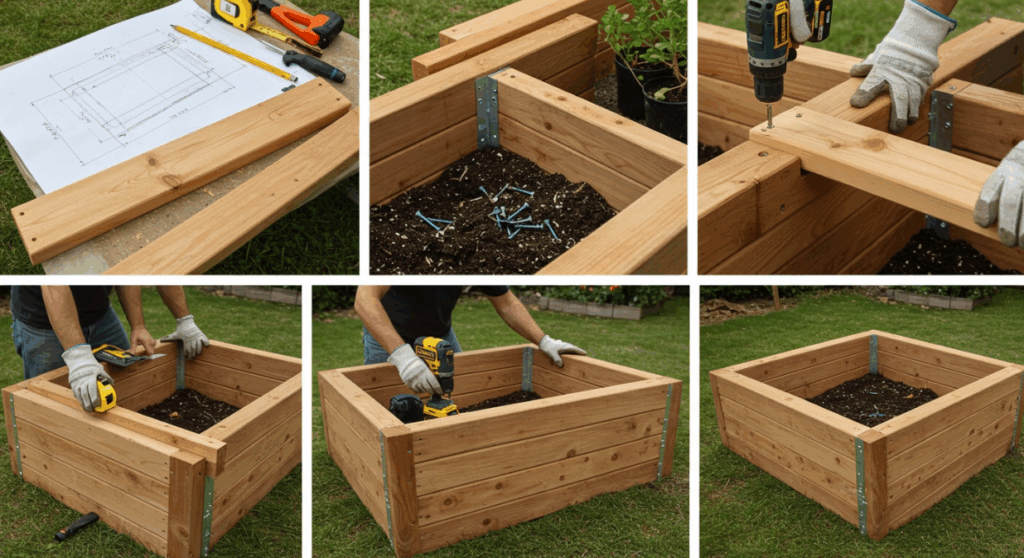
Once your planning is complete, it’s time for the exciting part: construction! While the specifics will vary depending on your chosen material, here’s a general guide for building a simple wooden raised garden bed.
Gathering Your Tools and Materials
Before you begin, ensure you have all necessary tools and materials. For a wooden raised bed, you’ll need lumber (e.g., 2x10s or 2x12s, preferably untreated cedar or redwood), a saw (miter saw or circular saw), a drill, wood screws (exterior grade), a tape measure, a level, and a square. Optional items include landscape fabric (weed barrier) and corner brackets for added stability. Having everything ready beforehand will make the construction process much smoother.
Site Preparation: Leveling the Ground
Choose your prepared site and clear any existing weeds, grass, or debris. It’s crucial to level the ground where your raised bed will sit. Use a spade or shovel to remove high spots and fill in low spots, checking with a level. A level base ensures your bed sits squarely and prevents soil from washing out unevenly. While not strictly necessary, some gardeners opt to lay down a layer of cardboard or landscape fabric at the bottom of the bed to suppress weeds and deter pests.
Assembly: Constructing the Frame
Cut your lumber to the desired lengths for the sides and ends of your raised bed. If you’re building a 4×8 foot bed, you’ll need two 8-foot pieces and two 4-foot pieces. Join the corners using screws. For stronger joints, you can use butt joints with screws or consider more advanced techniques like lap joints or half-lap joints if you’re comfortable with woodworking. Ensure all corners are square using a carpenter’s square before fully securing. For larger beds, consider adding vertical corner posts or middle supports to prevent bowing over time as the soil settles.
Filling and Planting Your New Raised Bed: Cultivating Success
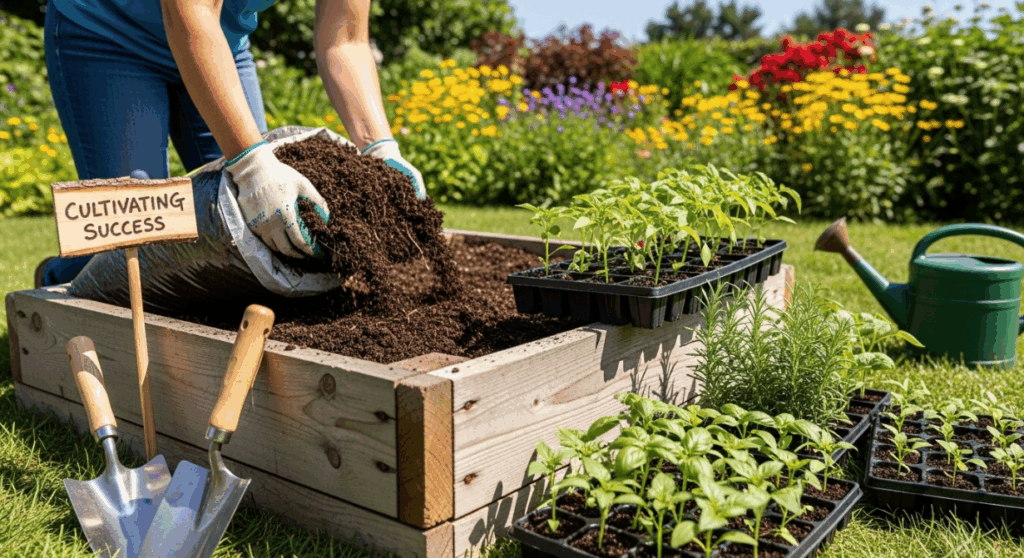
With your raised bed constructed, the final steps involve filling it with the right soil and bringing your plant vision to life.
The Perfect Soil Mix: Nourishing Your Plants
This is where your raised bed truly shines! A common and effective soil mix for raised beds is a blend of:
- Good quality topsoil: Provides a base and essential minerals.
- Compost: Adds rich organic matter, nutrients, and improves soil structure.
- Perlite or vermiculite: Enhances drainage and aeration.
- Peat moss or coco coir: Helps retain moisture and provides a slightly acidic component (optional, depending on your plants’ needs).
Aim for a mix that’s loose, crumbly, and dark in color. Filling your raised bed correctly is paramount for long-term plant health and productivity. Avoid using heavy garden soil directly, as it can compact and negate many of the benefits of a raised bed. Gradually fill the bed, moistening the soil as you go to help it settle.
Choosing Your Plants: Companion Planting and Crop Rotation
Now comes the fun part – planting! Consider what you want to grow and choose varieties that are well-suited to your climate and the amount of sunlight your bed receives. Explore the concept of **companion planting**, where certain plants benefit from being grown near each other (e.g., tomatoes with basil, marigolds to deter pests). This not only maximizes space but can also naturally improve plant health. For long-term soil health, practice **crop rotation** by changing what you grow in each bed season after season. This helps prevent nutrient depletion and reduces the build-up of specific soil-borne diseases. Don’t overcrowd your plants; give them adequate space to grow and thrive.
Maintaining Your Raised Garden Beds: Ensuring Long-Term Productivity
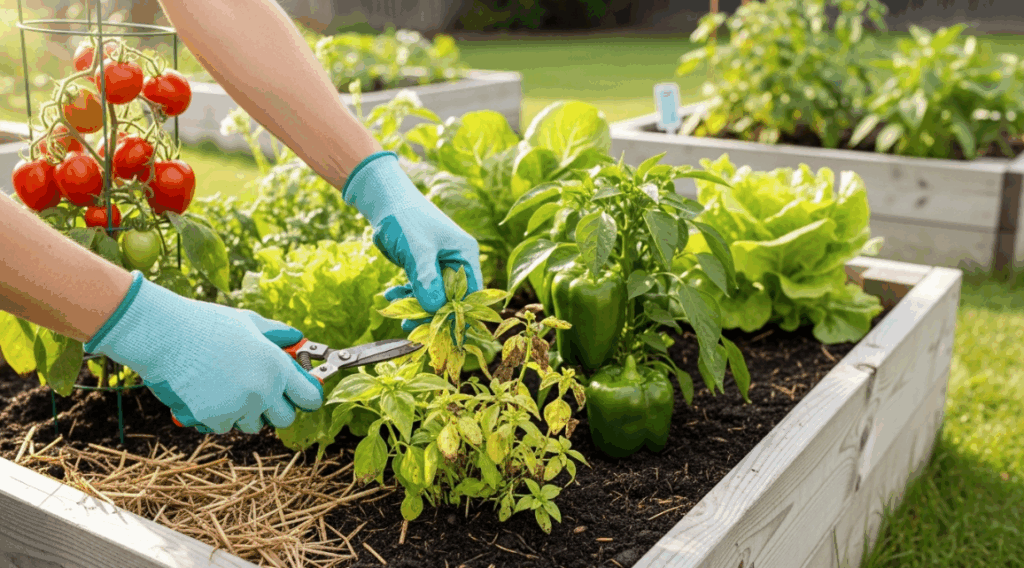
Building raised beds is just the beginning. Regular maintenance will ensure they remain productive and beautiful for years to come.
Watering Wisely: The Key to Plant Health
Raised beds tend to drain more quickly than in-ground gardens, so they may require more frequent watering, especially during hot, dry periods. Check the soil moisture regularly by sticking your finger about an inch or two deep. Water deeply and consistently, rather than frequent shallow watering, to encourage strong root development. Drip irrigation or soaker hoses are excellent options for raised beds, as they deliver water directly to the roots and minimize evaporation. Observing your plants for signs of stress is also an important part of knowing when to water.
Fertilizing and Replenishing Nutrients
As your plants grow, they will consume nutrients from the soil. Replenish these nutrients regularly through organic fertilizers, compost tea, or by top-dressing with fresh compost at the beginning of each growing season. A soil test every few years can also provide valuable insights into your soil’s nutrient levels and pH, allowing you to tailor your amendments precisely. Consistent nutrient management ensures your plants have everything they need for robust growth and abundant harvests.
Weeding and Pest Control: Ongoing Care
Even with the benefits of raised beds, some weeding will still be necessary. Address weeds promptly before they compete with your plants for resources. Keep an eye out for pests and address them using organic pest control methods whenever possible. Early detection is key to preventing infestations from getting out of hand. Hand-picking, insecticidal soap, or introducing beneficial insects can be effective strategies. Regular inspection allows you to catch issues before they become major problems.
Conclusion: Your Thriving DIY Raised Garden Awaits!
Building **DIY raised garden beds** is an incredibly rewarding project that can transform your backyard into a highly productive and beautiful space. From providing superior soil conditions and improved drainage to offering easier access and better pest management, the benefits are clear. By carefully planning your layout, choosing the right materials, and following sound construction principles, you’ll create a durable and effective growing environment. Remember to focus on quality soil, wise planting choices, and consistent maintenance to ensure your garden thrives.
Embrace the journey of home gardening with your new raised beds. Enjoy the satisfaction of harvesting your own fresh produce, the beauty of vibrant flowers, and the joy of connecting with nature right in your own backyard. So, gather your tools, roll up your sleeves, and embark on this exciting adventure. Your thriving garden paradise is just a few steps away! Happy gardening!
Ready to start building your dream garden? Share your raised bed plans and successes in the comments below!
